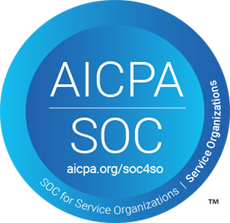ENX Magazine (December 8, 2016) by Michael Nadeau – Late last month, Xerox launched its Healthcare Multifunction Printer (MFP) targeted to small healthcare providers. The announcement was interesting in that the MFP adds value with specialized capabilities to better enable core tasks such as digitizing, storing, and sharing patient records.
“Healthcare is evolving at a rapid pace. With this evolution, the need to share patient information to positively impact the quality of care, coordinate care, reduce costs, and provide a seamless patient experience becomes more important,” said Rui Ferreira, director and general managers, Office Solutions Business Group at Xerox.
Healthcare providers typically print and fax patient records to other providers. Those receiving faxed records had to input the information manually. With the Healthcare MFP, they can simply scan and digitize patient documents using the “Share Patient Information” button in compliance with national standards for electronically sharing patient information.
Xerox has partnered with Kno2™ for its integrated patient document exchange services to ensure that the information is securely sent to the selected provider or patient’s Electronic Medical Record (EMR) chart, delivering key patient information in alignment with the provider’s existing clinical workflow. “The Kno2 and Xerox partnership is critical to this vertical offering,” said Ferreira. “It allows Xerox, Kno2, and customers to transform the ubiquitous office equipment—the Xerox MFP—into a means for interoperable data exchange.”
Xerox claims its MFP is more or less plug and play. “A key element of this offering is that the Healthcare MFP is integrated and fully part of the options available to dealers and partners,” said Ferreira. “When purchasing, the option provides all the support and includes up-lift for the dealer or partner—no IT or complex knowledge needed. Simply order the Healthcare MFP, like you would an MFP with a stapler.”
Dealers selling to healthcare providers might be able to offer similar capabilities if they are willing to build them on their own. The Xerox Healthcare MFP eliminates the overhead associated with building a solution and removes worry about compliance with HIPAA regulations.
“It becomes an easy conversation with customers: ‘Do you use fax or the U.S. Postal Service to share information? If you do, we have a better mouse trap—and it is compliant with all health/HIPAA standards,’” said Ferreira. While large hospital systems are often digital, many smaller facilities are not in a network. “This means our partners can now visit any number of locations that currently use fax to share information.” Those locations might be skilled nursing facilities, long-term care centers, nursing homes, behavioral health centers, inpatient rehabilitation facilities, hospice care centers, physical therapy centers, public health centers, facilities that provide ancillary services, and specialty doctors’ offices.
At the core of the Xerox Healthcare MFP is Xerox ConnectKey, which provides integrated scanning and cloud capabilities as well as additional security. “The Healthcare MFP is particularly intriguing because Xerox is now leveraging the underlying ConnectKey infrastructure, API, and partner ecosystem to tune to markets, tune to customers and—importantly for the future—to tune to specific verticals,” said Ferreira. “Even more exciting is that this offer will be forward compatible to future ConnectKey-enabled models. Again, this makes targeting verticals much more achievable as ROI and time to market is quite favorable now.”
“For example, the Xerox Personalized Application Builder program drives revenue and strengthens relationships,” said Ferreira. “Xerox’s program is the only one of its kind that provides tools, training and marketing resources that help ISVs, partners and more create personalized and very specific solutions ultimately suitable for all IT and document management infrastructures.”
The Healthcare MFP is still quite new to both customers and the channel, but Ferreira says early feedback is positive. “Our early test sites and partners have already begun to hear that this resonates with the non-acute care facilities. What’s more, fully integrating into the normal ‘Copier/MFP’ workflow with a simple button approach—a button that sits next to ‘Copy’—finally makes this transition from hardcopy to an intelligent clinical document that win-win scenario.”




